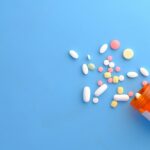There continues to be a growing number of individuals who experience a drug overdose or have died from an overdose. Despite this growing concern, we continue to see high numbers because individuals are either not seeking treatment or may not have access to effective treatment. In addition to understanding the dangers of a drug overdose, it is important that individuals also know what to do in the event of an overdose and how to prevent one. During treatment, you will have the chance to learn about avoiding overdose through relapse prevention. You will also have the opportunity to develop a relapse prevention plan, which can help reduce your own risks.
What Is a Drug Overdose?
A drug overdose is when a person takes more than a “normal or recommended amount” of drugs or other substances. Overdose is dangerous and can cause a number of harmful symptoms or result in death. While some individuals may intentionally overdose, many drug overdoses are unintentional and happen for different reasons. For example, someone may have been sober for a while and experienced a relapse. However, because their body was no longer accustomed to that substance, it was too much to take. Another common reason someone may overdose is that their drugs are laced with a more dangerous and lethal substance, like fentanyl.
The risk of drug overdose has always been a cause for concern among individuals seeking treatment or who are in recovery. According to research and data from the Centers for Disease Control and Prevention (CDC), roughly 100,306 drug overdose deaths occurred in the United States from April 2020 to April 2021. This was a 28.5% increase from the previous year. While the COVID-19 pandemic helps to explain this increase, it is still concerning why so many people across the country are overdosing. It is also concerning why so many people were continually overdosing prior to the pandemic.
Fentanyl Overdose
As mentioned, we see a lot of overdoses caused by fentanyl lacing nowadays. Fentanyl is a “powerful synthetic opioid” similar to morphine, but it is “50 to 100 times more potent,” says the National Institute of Mental Health (NIMH). Not only is it a growing concern, but Anne Milgram – administrator of the United States Drug Enforcement Administration (DEA) – describes fentanyl as “the single deadliest drug threat our nation has ever encountered.”
Over 150 people die each day from a synthetic opioid such as fentanyl. Even a small dose of fentanyl can be deadly. Recognizing the signs of a fentanyl or opioid overdose can save a life. Warning signs of an overdose include:
- Small and constricted pupils
- Loss of consciousness or falling asleep
- Impaired breathing
- Choking and gurgling sounds
- Limp body
- Cold, clammy skin
- Discolored skin, especially on the lips and nails
Preventing Drug Overdose
Unfortunately, there is no sure way to prevent overdose. This is especially true because individuals do not plan accidental overdoses. However, we can prevent them by offering more education and treatment options. It also helps to recognize factors that can increase the risk of overdose. In their brochure about preventing an opioid overdose, the CDC lists the following factors that can increase the risk of overdose:
- Combining opioids with alcohol and other drugs
- Taking high dosages of prescription opioids or taking more than prescribed
- Using illicit or illegal opioids such as heroin or fentanyl
- Having underlying health conditions such as reduced kidney or liver function
Additionally, the CDC created a framework with the goal of helping to prevent overdoses and substance use-related harm. In this framework, they identify six guiding principles and five strategic priorities to address the overdose crisis. The six guiding principles include:
- Promoting health equity
- Addressing underlying factors
- Partnering broadly with other organizations
- Taking evidence-based actions
- Advanced science to build the evidence base for what effectively prevents overdose
- Drive innovation through new ideas to reduce overdose and substance use-related harm
The five strategic priorities are as follows:
- Monitoring, analyzing, and communicating observed trends
- Building state, tribal, local, and territorial capacity
- Supporting providers, health systems, payors, and employers
- Partnering with public safety and community organizations
- Raising public awareness and reducing stigma
What to Do in the Face of a Drug Overdose
If you encounter someone overdosing, there are things you can do to help save their life. First, you must recognize the overdose and then treat it if you can. The Substance Abuse and Mental Health Services Administration (SAMHSA) helps explain what to do in the face of a drug overdose.
If someone is overdosing, call 911 immediately if the person exhibits any of these symptoms:
- Pale face and clammy skin
- Limp body
- Blue or purple lips or fingernails
- Makes gurgling noises and begins vomiting
- Breath or heartbeat slows or stops
After calling 911, you can begin CPR if the individual’s breathing has stopped or slowed and, if you are able to, administer naloxone if it is available. According to NIDA, naloxone is an opioid antagonist that can “rapidly reverse an opioid overdose.”
Understanding the dangers of drug overdoses in America is vital for everyone because we all have the potential to save the life of someone who is overdosing.
From April 2020 to April 2021, approximately 100,306 drug overdose deaths occurred in the United States, according to the Centers for Disease Control and Prevention (CDC). This was a 28.5% increase from the prior year, though the COVID-19 pandemic is partly to blame. The issue of drug overdoses in the country has been a growing concern for decades. In order to prevent or decrease the number of people overdosing each year, we must offer more education and treatment options, especially for individuals using illicit synthetic substances such as fentanyl. If you are seeking treatment and want to prevent the risk of a drug overdose, call Excel Treatment Center at (833) 883-9235 today to learn more.




